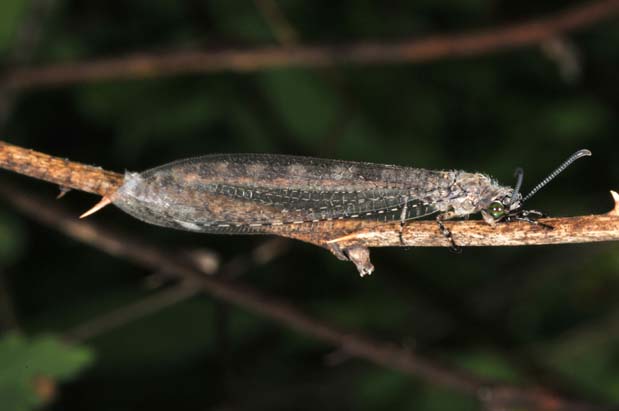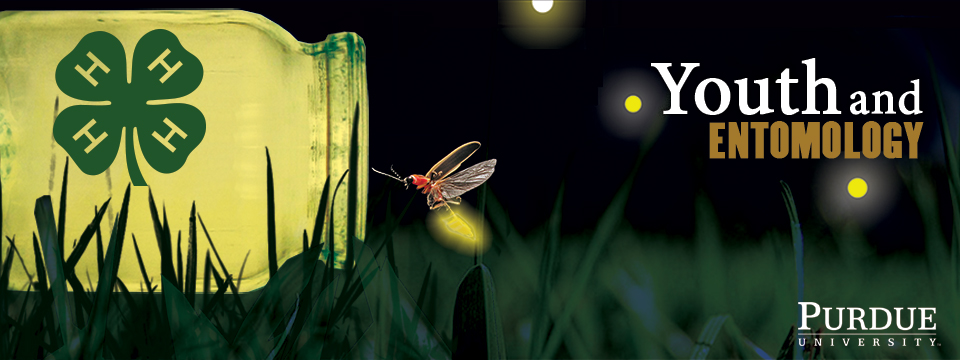

|
|
Antlion (doodlebug) adult
(John Obermeyer, Purdue University) |
|
Common Name: Antlion (doodlebug) - adult
See also: larva | benefit Scientific Name: Myrmeleontidae; sp. Status: beneficial predator Beneficial Stage: immature Biology: Antlions are beneficial predators of small insects. Adult antlions resemble a damselfly in body shape but are poor fliers that usually only fly at night. They have long clubbed antennae that measure 1½ the length of the head. They have a long, slender abdomen with two pairs of narrow, multiveined wings. The immature antlion-sometimes called a doodlebug, due to the winding trails it leaves in the sand as it crawls about-bears a relatively enormous pair of hollow mandibles, each with several sharp, teethlike projections. These sharp hypodermic-needle-like jaws are designed to pierce its victim and suck out fluids. Some antlion larvae excavate a characteristic conical pit in the sand that appears as a minivolcano. It is created as the antlion crawls backwards in circles while flipping out sand grains with its long jaws. As it moves round and round, the pit gradually gets deeper and deeper. Eventually the crater reaches 2 inches across and almost as deep, with very smooth, steep walls. The larva then hides at the bottom of the pit, only its open jaws protrude from the sand. When small crawling insects, such as ants, fall into the pit they slide to the bottom where they are instantly seized by the powerful jaws of the antlion. |
 |
||||||||||||||||
|
|
|||||||||||||||
|
Purdue Extension Entomology, 901 West State Street, West Lafayette, IN 47907 USA, (765) 494-4554 Department of Entomology | College of Agriculture | Extension © Purdue University | An equal access/equal opportunity university | Integrity Statement | Copyright Complaints | Maintained by ENTM IT Trouble with this page? Disability-related accessibility issue? Please contact us at entmwebmaster@purdue.edu so we can help. | ||||||||||||||||
